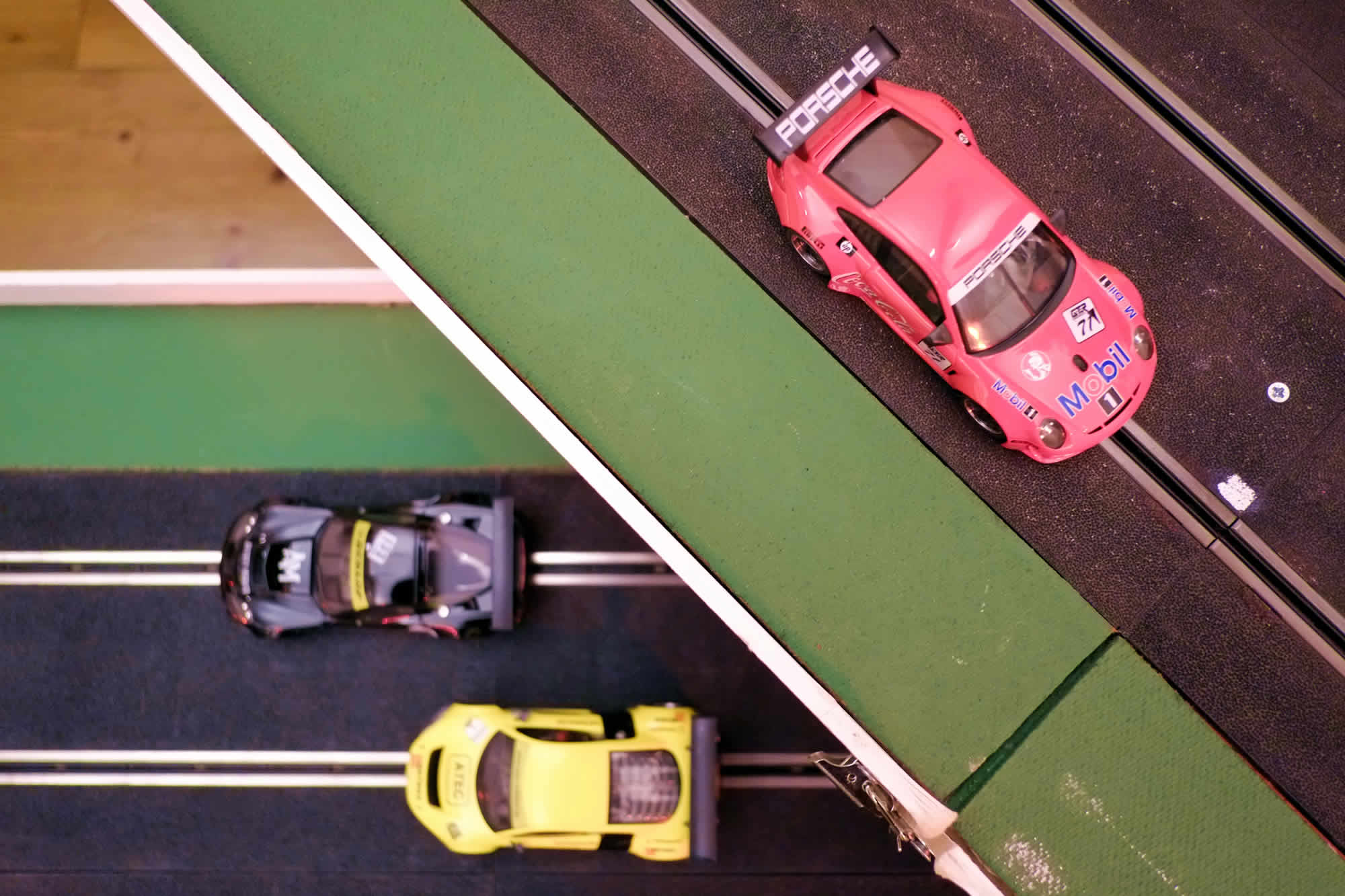Although nearly all our classes are described as ‘box standard’ there are still subtle things you can do to a slot car to maximise its performance.
BODY ROCK
Once the magnet has been removed the handling of most cars will improve if there is a degree of movement between the body and the chassis: ‘body rock’. This might be as simple as just loosening the screws a turn but sometimes a little sanding of the areas where the chassis and body come into contact is also required so they don’t come into contact and to stop any fouling.
Scalextric cars frequently have odd internal mouldings that can restrict independent movement of the body.
Also, many brands now mount their motors in ‘pods’ that can, with loosened screws (a little loose, not a lottle), float independently of the chassis and improve handling.
TYRES
Some manufacturers’ tyres are better formed than others and sanding the tyre whilst it’s mounted on its hub can flatten off bumps, reduce vibrations and increase the contact patch. Which is nice.
Do keep the sandpaper and tyre perpendicular, though. Maybe consider gluing a strip of grit to a flat piece of wood or metal to keep the contact nice and flat.
With the sandpaper still out, gently rounding off the edges of the tyres can prevent the car digging in and de-slotting when cornering. Which is not so nice.
Gluing tyres to their rims prior to truing greatly improves things and makes the sanding more effective.
Running on inevitably bumpy plastic track it’s best to lower the profile of the front tyres to lessen their contact with those bumps.
Even in 1:32 scale tyre compounds influence matters and grip and endurance need to be balanced. The club buys a solid all-round tyre from BRM and sells them cheap.
Front tyres need to be able to rotate freely. In addition, they can be glazed with nail varnish to lower their grip coefficient and stop them from grabbing if they’re put under load when in a corner. Also not so nice.
Some manufacturers, the better ones, make it possible to raise the front axle using grub screws in the chassis. This is a good thing.
MOTORS
Don’t over lubricate but do put a drop of oil on your motor’s bearings. Some folk will keep oil well away from the end where the brushes are.
The motor and gears will nearly always benefit from a period of running in to free things up and mesh things together. A little toothpaste on the gears, for a short period, can aid that process. Other grinding options exist but always remember to clean the stuff off once done.
Motors can often be screwed or else hot-glued to the chassis or motor pod to prevent twisting under load and wasting a whisker of energy.
AXLES
A drop of oil on the bushings helps reduce friction in the axle and frees up some revs.
Sometimes a spacer might be needed to stop excessive lateral play in an axle which can unsettle a car when cornering.
Since they are knurled at the end – to grip the hub – Scalextric axle bushings have a much bigger diameter than their axles, allowing all sorts of vagueness and sometimes ‘hop’ – when the rear of the car bounces under load. This can be cured, or moderated, by dropping some oil in the bushings, jacking the chassis up and setting the axle turning and then very carefully putting a drop of super glue on to the spinning axle by each bushing. Capillary action should draw it in. Keep it turning for a few minutes while the glue hardens and that lateral movement should be gone.
CHASSIS
It isn’t uncommon to find you’ve got a slightly warped chassis. This is most noticeable once the magnet is out and you barrel into a corner. As you brake before it, a warped chassis can cause the rear of the car to be pushed out of line as though crabbing.
There’s detailed instructions in this PDF on how to restore your chassis’s balance.
FINAL WORD ON TUNING
You can do all of the above and still the best tuning you can achieve is practice. Nothing beats practising. Which is nice.
